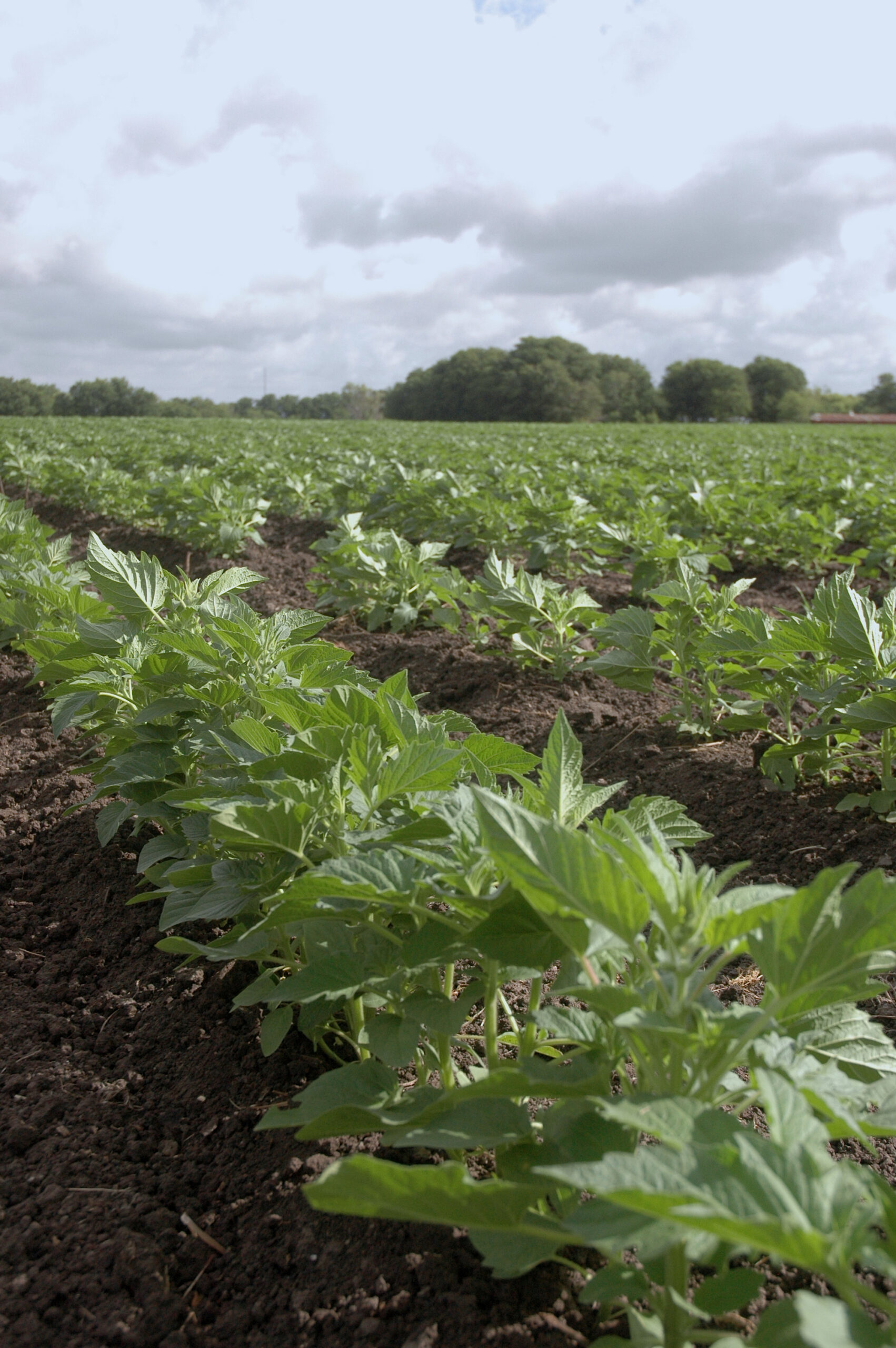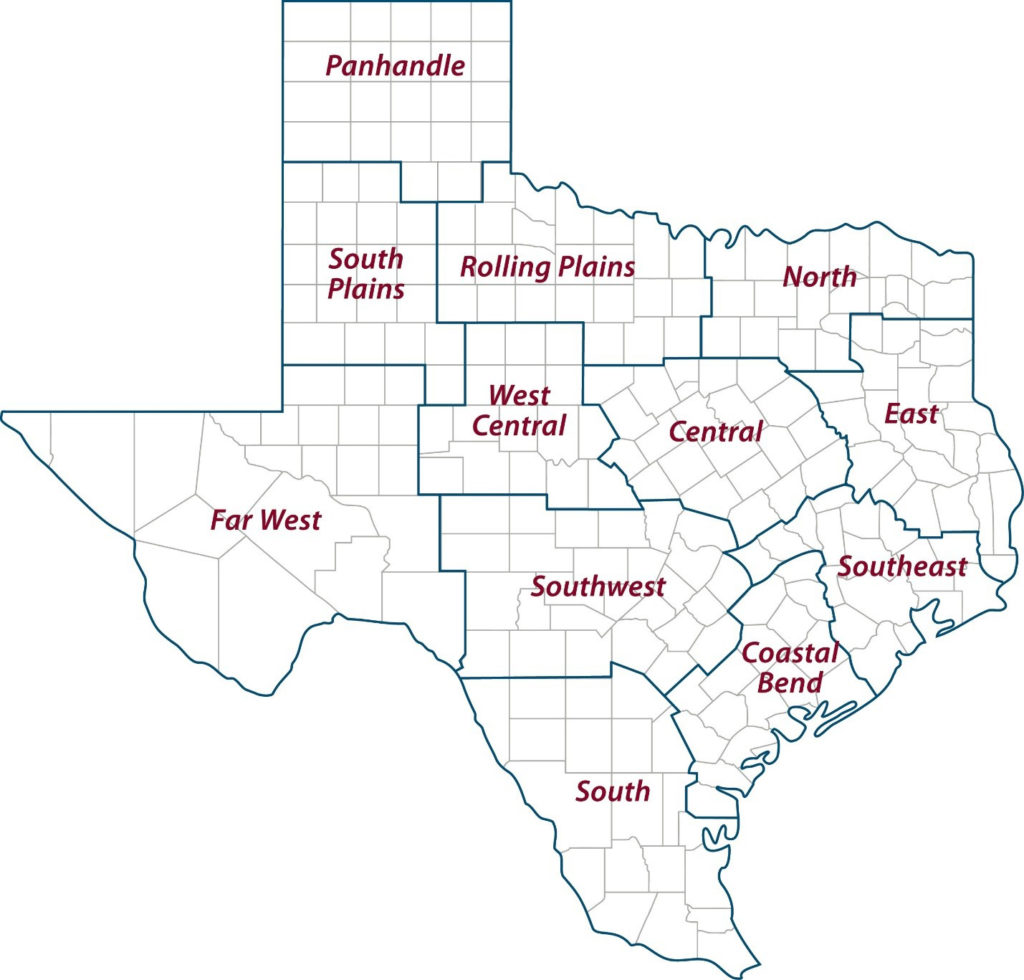Alternative crops offer options when weather doesn’t cooperate

Texas Crop and Weather Report
Rains this year in portions of Texas have been beneficial for most staple commodity crops such as corn, cotton and sorghum, but have also favored alternative crops, according to Texas A&M AgriLife Extension Service experts.
Texas producers are always looking for alternative crops that provide options under different weather situations, including sunflowers, sesame, canola and lately hemp.
This year, continuous rainfall early in the growing season delayed planting of main crops leading to some producers looking into new crop options.
At the 2,716-acre Stiles Farm in Thrall, trial acres were devoted to brassica carinata, a crop being studied for use as bio-jet fuel, to see how it would perform, said Ryan Collett, Stiles Farm Foundation manager. The carinata crop typically is planted in mid-November and follows a similar growing season to hard red winter wheat.
“It’s been harvested and will be crushed and processed into bio-jet fuel,” Collett said.
The Stiles Farm Foundation has long served Blackland farmers with the latest research studies and demonstration trials. The farm foundation was established in 1961, becoming part of The Texas A&M University System.
Second year of carinata
In previous years, the Stiles Farm has gone with double-crop sesame. However, continuous summer rains delayed wheat harvest so much the optimum planting window couldn’t be taken advantage of.
While carinata appears to have performed well this year, questions remain about performance under growing temperature extremes and other challenges.
“The biggest question in our area is how low of a temperature the crop can handle in the winter, for how long, and at what stage,” Collett said. “We had decent yields in year one, about 27 bushels to the acre and $17.50 per bushel contracted price. However, the second year was 12 bushels to the acre at around $14 per bushel contracted price. We attribute the lower yield to cold weather damage. With good growing conditions, it should be reasonable for carinata to yield in the 30 to 40 bushel/acre range.”

Harvesting, root system
Collett said harvest equipment is the same as for a wheat crop, “just finely adjusted as the carinata seed is extremely small.
“I like the deep taproot of the crop and how it seems to aggressively outcompete winter weeds, so far at least,” he said. “However, in the two years we have grown it, there was significant freeze damage each year while at the same time our wheat crops have not suffered any cold weather issues. We will continue to plant 50 or less acres each year to flesh out this new crop in the region.”
AgriLife Extension district reporters compiled the following summaries:
Central
Spotty rainfall throughout the district led to cooler temperatures, and good rain chances were in the forecast. Soil conditions remained dry, and some brush control was done. A few fields were tilled, and ranchers prepared for fall planting. Some wheat was planted. The pecan crop was heavy in irrigated orchards with some aphid issues reported and expected pecan weevils if more rainfall arrives. Corn and sorghum were still being harvested. Armyworms were heavy in some areas. Cotton leaf drop started, and producers were spraying defoliant. All livestock were in good condition. Cattle prices dropped some. Sheep and goat markets were good.
Rolling Plains
Extremely unfavorable conditions persisted across the district as farmers and ranchers endured the unrelenting heat and lack of rain. Cultivated crops were all showing signs of stress or nearing failure. Grasses in both pastures and roadsides were completely dried up, and the risk of wildfires was a constant danger. Some producers opted to ship or sell cattle due to diminishing pasture grazing. Grasshoppers remained across the area, even with little for them to consume.
Coastal Bend
Showers early in the week brought 0.5-2 inches of rain across the district and helped to maintain soil moisture. Corn and rice harvests were nearly complete, with good but variable yields. Cotton harvest was about halfway done, slowed by scattered rain and ongoing defoliation efforts. Hay cutting and baling were active, producing strong yields. Fieldwork such as stalk chopping and disking had begun. Pasture and range conditions remained mostly good, but additional moisture is needed. Livestock were in good condition with no major issues reported.
East

Several counties in the district received much needed rainfall, however, much more will be needed to replenish soil moisture. Pasture and rangeland conditions were fair to good. Subsoil and topsoil conditions were short to adequate. Hay production has slowed but continued. Livestock were in fair to good condition. The cattle market was steady to higher in most classes. Producers continued the fight against armyworm infestations. Feral hogs were moving and have increased their destruction.
Southeast
Parts of the district received scattered showers throughout the week, which allowed for some pastures to receive a good amount of rain, but some areas remained dry. Rain was in the forecast. Cotton harvest was in full swing. Forage continued to be cut for hay. Pastures were declining due to lack of moisture and high temperatures. Rice harvest was delayed due to scattered rain. Following the rains, some producers were scouting for forage pests and treating armyworms due to the green up. Sorghum and corn harvests wrapped up. The rain benefited cotton. Pastures were in great shape with ponds full, and cattle were doing well. Rangeland and pasture ratings varied from poor to excellent. Soil moisture levels ranged from adequate to surplus.
Panhandle
The district experienced extreme heat and drought conditions. Livestock producers supplemented with hay and protein. Wheat planting began in irrigated circles intended for fall pasture. The corn crop started to dry down in many early planted fields, with harvest expected to begin soon. Rangeland was going dormant. Overall soil moisture ranged from very short to short, and pasture and range conditions were very poor to fair. Overall, crop conditions were poor to good.
North
The pasture and rangeland were fair to good, and the subsoil and topsoil moisture levels were short and adequate. Some parts of the district received rain ranging from 0.5-1.5 inches. The overall temperature remained high with some daytime temperatures slightly cooler. Pastures were observed as struggling, and livestock were observed as doing well. Some hay, grain sorghum and corn were harvested.
Far West
Hot and dry conditions continued before temperatures dropped into the upper 60s and rain fell over most of the district. Rain amounts ranged from trace amounts to 2 inches with more rain in the forecast. Topsoil and subsoil moisture levels were still very short. Cooler temperatures let the cotton crop recover and hang on to a few more bolls. Cotton bolls were beginning to open in the earliest planted fields. Some wheat was expected to be planted soon. Cantaloupe and watermelon were growing well but nearing the end of the growing season. Pecans were growing. Rangeland and pasture conditions remained in very poor condition. The moisture could help pastures with some late-season forage growth. Livestock were in poor to fair condition. Supplemental feeding was necessary in most livestock operations.
West Central
Recent weather brought some relief with cooler temperatures and scattered rain showers, averaging around 0.5 inches for the week. While these conditions eased the intense heat of recent weeks, the district remained critically dry, impacting crops and pastures. Forages resumed some growth, but many warm-season crops and pecan trees continued to suffer from drought stress. Field preparations were underway for fall planting, though more moisture was needed to proceed. Livestock conditions were stable but impacted by reduced forage quality and water shortages, leading some producers to sell cattle. Overall, while cooler temperatures were a welcomed change, the area still faced severe dry conditions and the need for more substantial rainfall.
Southwest
A break in the weather brought much-needed relief from the hot, dry conditions with several days of cloudy skies, scattered showers and isolated thunderstorms. This shift helped cool temperatures slightly and brought rainfall ranging from 0.25-2.9 inches. While the rain slightly hydrated soils, pastures remained the same. There was not enough rainfall to adversely affect the cotton harvest or its quality. Cotton was defoliated. The heavy rain earlier in the week provided relief from the heat and watered rangeland, although it delayed the baling of late summer hay cuttings. Corn and milo harvests were complete with good yields reported. Preparations for small grain planting were underway, and fall gardeners had ramped up. There was a heavy mold presence in pecan orchards due to high moisture. Aphid counts in orchards were moderate but were being offset by the presence of parasitic wasps and lady beetles. Some armyworm activity continued in higher fertility fields. Livestock conditions remained fair to good. Wildlife remained active, with fawns growing well this year.
South
Scattered showers and thunderstorms were reported along with cooler or average temperatures. A large part of the district received between 0.5-4.5 inches of rain. Live Oak County received rainfall totals ranging from 0.3-4 inches, however McMullen, Duval and Hidalgo counties did not receive significant rainfall. Prior to the rain, conditions were extremely hot, with temperatures exceeding 105 degrees, and varying degrees of dryness and humidity. The rainfall improved conditions for pastures and crops. Sesame harvest was about 85% complete with above-average yields reported, while cotton harvest was approximately 90% complete. Cotton stalk destruction was underway, with the stalk destruction deadline of Sept. 15. Most cotton acres in other counties were harvested, with varying yields and quality; any remaining cotton likely dropped in quality and some was expected to be shredded. Citrus and vegetables continued to be irrigated. Peanut producers reduced irrigation as harvest neared. Producers were preparing fields for fall and winter crops. Fall corn was thriving with the recent rains. Forage production was up, and hay fields looked good. Hay producers were baling across the counties, and a surplus of hay was noted. Livestock were in good condition, though some producers remained concerned about stock tank levels and continued to supplement feed with hay and cubes. Cattle prices remained steady to lower while sale volumes were steady to higher at most markets. Livestock and wildlife conditions improved due to the rainfall and cooler temperatures. Ranchers and deer producers were supplementing livestock and wildlife, and dove populations were abundant in many areas.





